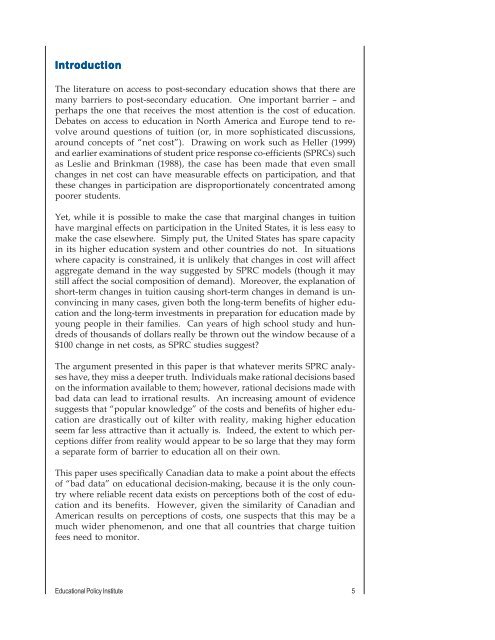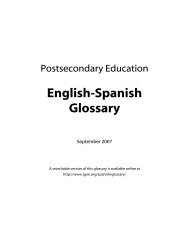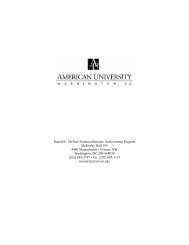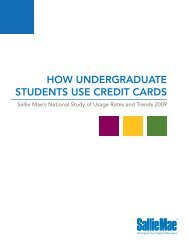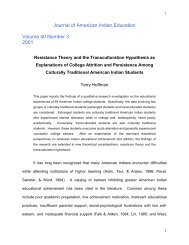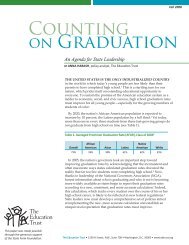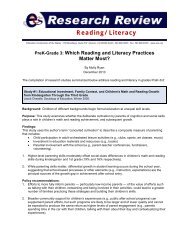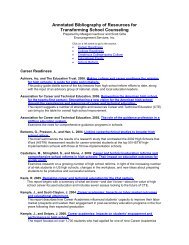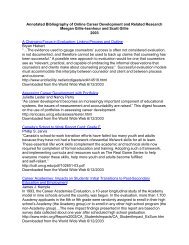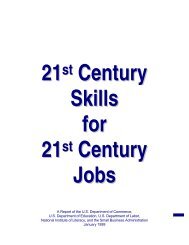A Little Knowledge is a Dangerous Thing: How Perceptions of Costs ...
A Little Knowledge is a Dangerous Thing: How Perceptions of Costs ...
A Little Knowledge is a Dangerous Thing: How Perceptions of Costs ...
- No tags were found...
You also want an ePaper? Increase the reach of your titles
YUMPU automatically turns print PDFs into web optimized ePapers that Google loves.
IntroductionThe literature on access to post-secondary education shows that there aremany barriers to post-secondary education. One important barrier – andperhaps the one that receives the most attention <strong>is</strong> the cost <strong>of</strong> education.Debates on access to education in North America and Europe tend to revolvearound questions <strong>of</strong> tuition (or, in more soph<strong>is</strong>ticated d<strong>is</strong>cussions,around concepts <strong>of</strong> “net cost”). Drawing on work such as Heller (1999)and earlier examinations <strong>of</strong> student price response co-efficients (SPRCs) suchas Leslie and Brinkman (1988), the case has been made that even smallchanges in net cost can have measurable effects on participation, and thatthese changes in participation are d<strong>is</strong>proportionately concentrated amongpoorer students.Yet, while it <strong>is</strong> possible to make the case that marginal changes in tuitionhave marginal effects on participation in the United States, it <strong>is</strong> less easy tomake the case elsewhere. Simply put, the United States has spare capacityin its higher education system and other countries do not. In situationswhere capacity <strong>is</strong> constrained, it <strong>is</strong> unlikely that changes in cost will affectaggregate demand in the way suggested by SPRC models (though it maystill affect the social composition <strong>of</strong> demand). Moreover, the explanation <strong>of</strong>short-term changes in tuition causing short-term changes in demand <strong>is</strong> unconvincingin many cases, given both the long-term benefits <strong>of</strong> higher educationand the long-term investments in preparation for education made byyoung people in their families. Can years <strong>of</strong> high school study and hundreds<strong>of</strong> thousands <strong>of</strong> dollars really be thrown out the window because <strong>of</strong> a$100 change in net costs, as SPRC studies suggest?The argument presented in th<strong>is</strong> paper <strong>is</strong> that whatever merits SPRC analyseshave, they m<strong>is</strong>s a deeper truth. Individuals make rational dec<strong>is</strong>ions basedon the information available to them; however, rational dec<strong>is</strong>ions made withbad data can lead to irrational results. An increasing amount <strong>of</strong> evidencesuggests that “popular knowledge” <strong>of</strong> the costs and benefits <strong>of</strong> higher educationare drastically out <strong>of</strong> kilter with reality, making higher educationseem far less attractive than it actually <strong>is</strong>. Indeed, the extent to which perceptionsdiffer from reality would appear to be so large that they may forma separate form <strong>of</strong> barrier to education all on their own.Th<strong>is</strong> paper uses specifically Canadian data to make a point about the effects<strong>of</strong> “bad data” on educational dec<strong>is</strong>ion-making, because it <strong>is</strong> the only countrywhere reliable recent data ex<strong>is</strong>ts on perceptions both <strong>of</strong> the cost <strong>of</strong> educationand its benefits. <strong>How</strong>ever, given the similarity <strong>of</strong> Canadian andAmerican results on perceptions <strong>of</strong> costs, one suspects that th<strong>is</strong> may be amuch wider phenomenon, and one that all countries that charge tuitionfees need to monitor.Educational Policy Institute 5


